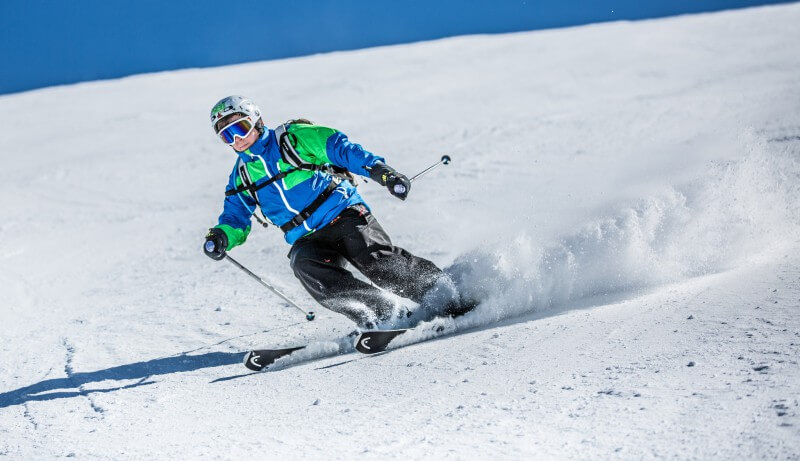Equipment for the climber. Tips for beginners
Rating: 8,6/10 (1789 votes)  Hiking in the mountains – a great way to test your own stamina, fitness and a certain level of courage. Not everyone dares to climb to great heights in cold weather, strong winds and unpredictable dangers. For many years, mountaineering has been romanticized in films, books, songs and other works of culture, but not all of them reflected the main essence of – it is not just a sport or a kind of active recreation – it is hard work and constant risk. And it is precisely the properly selected climber's equipment that makes the ascent significantly easier and reduces any dangers. Let's consider the most important things included in the climber's inventory.  Don't forget about climbing gloves. In their structure, they resemble ski models, only in the case of mountain climbers, a stronger fabric is used to protect the hands.  Climbing gloves ShoesIf a novice climber can still save money on clothes, he won't be able to do it with shoes – exactly what will be worn on your feet, will determine the degree of protection in any unforeseen situation. The fact is that mountain boots, as mountaineering shoes are called, are made using a special technology, depending on the type of climbing. For the most part, these are massive boots with reinforced ankle boots and a special sole that correctly distributes the weight load. Mountain boots are divided into several types: for classic climbing on rocks, for hiking on glaciers and for hiking. There are male, female and teenage models. The main disadvantage is – this is the price: a pair of quality shoes will cost at least $ 250.  Mountain boots Vibram outsole – rescuing a climberAccording to statistics provided by experienced climbers, most injuries are associated not with the ascent, but with the descent. Some extreme lovers simply slip on icy stones, which ends in dislocations and fractures. In order to minimize the risk of such cases, in 1937, a rubber sole Vibram was developed in Italy, named after its inventor. The outsole is based on car tire tread, reduced to the proportions of a human foot. 17 years later, this invention became known to the whole world. Now the Vibram sole is used in all flagships from mountaineering shoe manufacturers. Sure, Such a model of a sole with the possibility of replacement adds up to 30% to the cost of boots, but, as seasoned climbers and some hikers say, such shoes actually saved more than one life.  Climbing glasses EquipmentClimbing GogglesContrary to popular belief, Climbing Goggles shouldn't be as massive as a ski mask ... Their task is similar – to protect the climber's eyes from ultraviolet radiation, but the side curtains will become a key design detail for climbers. It is the presence of curtains that gives not only additional protection from the sun, but also protects the eyes from strong wind. HelmetDespite the fact that helmet is more relevant for climbing, than for classical mountaineering, in some cases it is the protection of the head that can save a person from certain death. There are not many models of mountaineering helmets, but each one is strong enough to protect the head when falling from low heights.  Classic ice ax for mountaineering Ice axAs the professionals joke, holding a ice ax in your hands makes you feel like a real climber. For an extreme, this is the main tool on the ascent, descent and even a halt. Multifunctional modern models of ice axes are well represented on the tourist market. Trekking polesMany tourists do not need trekking poles at all – and it's not about the level of their training, most of the beginner extreme sportsmen choose simple routes, where the `` staff '' may not actually be needed. But, if you chose a route with a large elevation difference, then extra support, and even in the absence of experience, will not hurt. The so-called altitude sickness can lead to migraines, dizziness and even temporary deterioration of vision, and as a result – loss of balance. And in this case, tracking sticks will always help.  Trekking stick Why do modern climbers need sticks?Frequent the question of whether you need to have trekking sticks with you even on a simple route is asked by many climbers. Experienced tourists claim that a pair of modern telescopic poles will not become an extra load, but a useful service is guaranteed. First, the stick can be used as an avalanche probe for a fairly decent depth of snow. The folding models are very durable, and can not only withstand the mass of a tourist, but also very strong blows against stones. Secondly, if you fold several assembled sticks into a rectangle and drag the joints with climbing loops – you get a stretcher for the injured groupmate. The durability is appreciated by many tourists, and according to them, such stretchers are much more reliable than standard cloth carriers. And thirdly, modern tracking sticks can be used as a primitive camera tripod. Some manufacturers have even made special models with adapters that turn the stick into a monopod. Ice screwIf fishermen have ice screw – this is a large device, the climbing option is much smaller, although it performs a similar task. For climbers, it is necessary to drill ice not only to secure the belay, but also, for example, to fix the tent and other purposes. The thing is necessary, but just one ice screw per group is enough.  Ice augers of different sizes Cats and snowshoesThose same crampons attached to the boots of climbers should only be purchased if the route requires it. On an even rocky ascent, they will not always be needed, but on ice or steep slopes, the presence of thorns on shoes will seriously ease the life of even the most experienced climber. Similarly, the use of snowshoes. If a large amount of deep snow is not expected on the route, then there is no point in taking this piece of equipment with you, which, by the way, weighs a lot. Insurance and harnessesKey elements of the climber's belay as in rock climbing, there is a harness. Literally – this is what the climber will sit on when the safety line is in operation. There are a lot of harness models, but the rule here also does not differ from climbing – there should be enough space on the belt for carabiners, loops and other attributes. The basis of belaying is always performed by rope and climbing loops. There should be as many of them in the arsenal of a novice climber, since you cannot predict when exactly they will have to be used.  Safety harness TentFrom a standard tourist tent, the climbing tent differs not only in its construction and weight, but also in the layout. The most unusual option is a pyramidal-shaped hanging tent, which is mounted on a screed, directly onto a steep rock. Classic climbing tents have a streamlined frame that can withstand strong gusts of wind. They are also much lighter and more compact to carry than conventional overland models. tourism. Rescue meansThe main and most popular means of rescuing a climber – this is a beeper. It is relevant for all winter sports, but it is the climbers who use this gadget most often. The receiver and transmitter in the device operate at a strict frequency, which allows you to hear the signal for help even from another group, so the beeper is consistently leading in the list of rescue equipment.  Beeper is a reliable means of rescue rocket launchers are also in high demand among climbers. It is not difficult to send a distress signal that can be seen from a long distance. The only important condition for starting – clear skies and minimal gusts of wind. Recently, parachutes have been actively introduced into use, powered by a gas cylinder placed in a backpack. Such a tool significantly reduces the risk of death as a result of falls from great heights. powered by a gas cylinder placed in a backpack. Such a tool significantly reduces the risk of death as a result of falls from great heights. powered by a gas cylinder placed in a backpack. Such a tool significantly reduces the risk of death as a result of falling from great heights. We also recommend reading Things to do in Cologne Topic: Equipment for the climber. Tips for beginners. |




